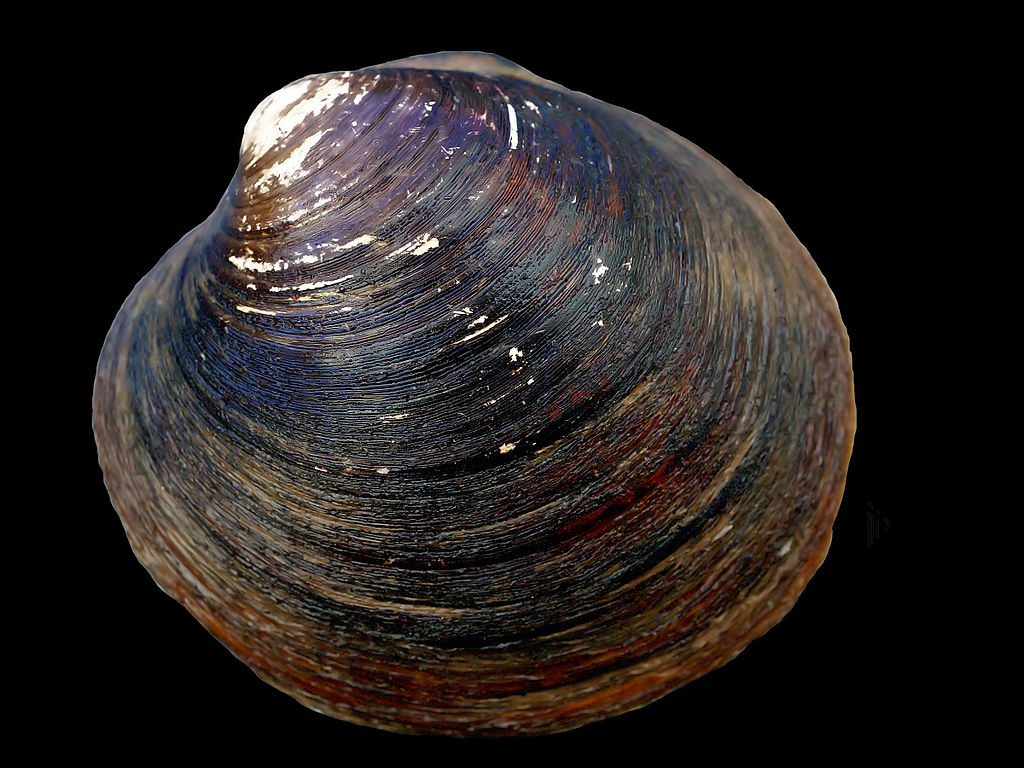Invasion History
First Non-native North American Tidal Record:First Non-native West Coast Tidal Record:
First Non-native East/Gulf Coast Tidal Record:
General Invasion History:
Arctica islandica is a large clam, native to cold waters of the North Atlantic. It spans from North Carolina to Labrador, Iceland, the White Sea, Russia and Spain. In the southern part of its range, it is confined to deep water, but north of Cape Cod, shells are commonly found washed up on beaches (Abbott 1974; Gosner 1978; Hayward and Ryland 1990; Marlin 2011). Living animals have not been found outside its native range, but shells have been found on shores in California and Oregon (Coan 1998; Chapman and Miller 1999). This bivalve is heavily fished in the North Atlantic, and is widely sold alive on the West Coast (Chapman et al. 2003), so releases as discarded seafood or unused bait are possible.
North American Invasion History:
Invasion History on the West Coast:
In 1997, a pair of valves of A. islandica was found on a beach near Cape Kiwanda, Oregon (Coan 1998), 'perhaps the remnants of a picnic'. In 1998, the remains of seven valves were found in gravel in the northeast corner of Humboldt Bay, California (Chapman and Miller 1999). In both cases, there is no evidence that live clams were introduced to the ocean or bay, but that possibility cannot be excluded.
Description
Arctica islandica (common names: Ocean Quahog; Black Clam; Mahogany Clam) is a large clam with an almost circular shell. The shell is covered with a brown-to-black periostracum, often brittle and peeling. The shell is strong, but rather chalky. The interior of the shell lacks a pallial sinus. The anterior hinge line is strongly curved. The right valve has three prominent cardinal teeth (immediately below the umbo) and a singular posterior lateral tooth. The left valve also has three cardinals and one posterior lateral. The interior of the shell is smooth, glossy, and white, lacking the purple stain of Mercenaria mercenaria (Quahog, Hard Clam). This clam reaches 100-120 mm in length, and is characteristic of cold, often deep waters and muddy to sandy bottoms (0-482 m). (Description from: Abbott 1974; Gosner 1978; Hayward and Ryland 1990; Marlin 2011)
Taxonomy
Taxonomic Tree
| Kingdom: | Animalia | |
| Phylum: | Mollusca | |
| Class: | Bivalvia | |
| Subclass: | Heterodonta | |
| Order: | Veneroida | |
| Superfamily: | Arcticoidea | |
| Family: | Arcticidae | |
| Genus: | Arctica | |
| Species: | islandica |
Synonyms
Potentially Misidentified Species
Quahog, Hard Clam- NW Atlantic, many failed introductions to West Coast, one persisting population in Colorado Lagoon, Long Beach, CA
Ecology
General:
Arctica islandica is a large bivalve which inhabits muddy to sandy bottoms, occurring in cold waters, ranging from subtidal waters to 150 m (Abbott 1974; Gosner 1978; Hayward and Ryland 1990). It is a suspension-feeder, with planktonic larvae. The optimal temperature range is 6-16 C. It can be expected to be restricted to marine salinities. Adults mature at 12.5 to 15 years and can live for 225 years (Food and Agriculture Organization 2012a).
Food:
Phytoplankton
Trophic Status:
Suspension Feeder
SusFedHabitats
| General Habitat | Unstructured Bottom | None |
| Salinity Range | Euhaline | 30-40 PSU |
| Tidal Range | Subtidal | None |
| Vertical Habitat | Endobenthic | None |
Tolerances and Life History Parameters
| Maximum Temperature (ºC) | 20 | Field, Food and Agriculture Organization 2012a |
| Minimum Length (mm) | 49 | Food and Agriculture Organization 2012a |
| Maximum Length (mm) | 120 | Food and Agriculture Organization 2012a |
| Broad Temperature Range | None | Cold-Temperate |
| Broad Salinity Range | None | Euhaline |
General Impacts
Live specimens of Arctica islandica have not been found outside its native range. However, this clam is heavily fished in the Atlantic Ocean, and shipped live around the world (Chapman et al. 2003; FAO 2012). Shells have been found on the West Coast of the US (Coan 1998; Chapman and Miller 1999), and introductions of live animals are possible.Regional Distribution Map
Non-native
Native
Cryptogenic
Failed
| Bioregion | Region Name | Year | Invasion Status | Population Status |
|---|---|---|---|---|
| P130 | Humboldt Bay | 1998 | Non-native | Failed |
| NEP-IV | Puget Sound to Northern California | 1997 | Non-native | Failed |
Occurrence Map

| OCC_ID | Author | Year | Date | Locality | Status | Latitude | Longitude |
|---|---|---|---|---|---|---|---|
| 697059 | Chapman and Miller 1999 | 1998 | 1998-10-18 | Humboldt Bay, northeast corner | Non-native | 40.8510 | -124.0960 |
References
Abbott, R. Tucker (1974) American Seashells, Van Nostrand Reinhold, New York. Pp. <missing location>Academy of Natural Sciences of Philadelphia 2002-2024a Malacology Collection Search. <missing URL>
Bousfield, E. L. (1960) Canadian Atlantic Sea Shells, In: (Eds.) . , Ottawa. Pp. <missing location>
Chapman, John W.; Miller, Todd (1999) The odd northeast Pacific records of the bivalve Arctica islandica (Linnaeus 1767): Bait remnants?, Festivus 31(5): 55-57
Chapman, John W.; Miller, Todd W.; Coan, Eugene V. (2003) Live seafood species as recipes for invasion, Conservation Biology 17(5): 1386–1395
Coan, Eugene V. (1998) A bivalve oddity form an Oregon beach., Festivus 30(3): 40
Food and Agriculture Organization 2012a Species Fact Sheets: <i>Arctica islandica</i> (Linnaeus, 1767). <missing URL>
Gosner, Kenneth L. (1978) A field guide to the Atlantic seashore., In: (Eds.) . , Boston. Pp. <missing location>
Harvard Museum of Comparative Zoology 2008-2021 Museum of Comparative Zoology Collections database- Malacology Collection. <missing URL>
Hayward, P.J.; Ryland, J. S. (1990) <missing title>, 2 Clarendon Press, Oxford. Pp. <missing location>
MarLin- Marine Life Information Network 2006-2024 MarLin- Marine Life Information Network. <missing URL>
U.S. National Museum of Natural History 2002-2021 Invertebrate Zoology Collections Database. http://collections.nmnh.si.edu/search/iz/
